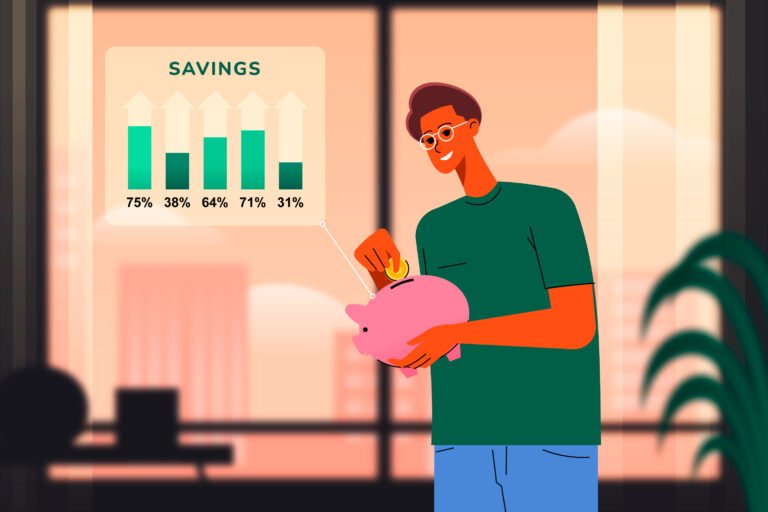Loan Payoff Timeline Tool
Track how long it will take to pay off your loan completely
Knowing exactly when your loan will be paid off is key to effective long-term financial planning. The payoff timeline is influenced by several variables, including interest rate, loan term, payment frequency, and any additional payments made along the way. Understanding this timeline helps you evaluate how different repayment strategies can shorten your debt period and reduce total interest paid. It also supports better decision-making around budgeting, investing, and goal setting. Whether you’re aiming to become debt-free faster or want to balance repayment with other priorities, learning how your loan timeline evolves gives you the insight needed to stay financially proactive and prepared.
Benefits of
Knowing Your Loan Payoff Timeline
Tracking your payoff schedule helps you:
📆 Loan Payoff Timeline Tool
Meet Brian
Example Scenario
Brian has a $25,000 student loan and is determined to pay it off early. He’s currently making the minimum required payment but wants to see how adding a bit more each month could shorten his payoff timeline and reduce total interest.
Brian uses the loan payoff timeline tool to compare different payment options:
| Monthly Payment | Payoff Time | Total Interest Paid |
|---|---|---|
| $287.70 | 10 years | $9,524.00 |
| $400.00 | 7 years | $6,300.00 |
| $500.00 | 5.5 years | $4,475.00 |
➡️ Current Payoff: 10 years — Potential: 5.5 years
After reviewing the results, Brian chooses to increase his payment to $500/month, cutting his loan term nearly in half and saving over $5,000 in interest.
💡 With a clear timeline in front of him, Brian stays motivated and focused. He now has a solid plan to reach debt freedom sooner while keeping full control over his monthly budget.
How the Loan Payoff Timeline Tool Works – Map Out Your Path to Debt Freedom
✅ 1. Enter Your Loan Details
Start by providing the key information about your loan:
- Original Loan Amount
- Interest Rate (Annual Percentage Rate)
- Current Monthly Payment
- Remaining Loan Term (optional)
These inputs establish your current repayment timeline.
✅ 2. Add Extra Payments (If Any)
You can choose to include additional payments:
- Monthly Extra Amount
- One-Time Lump Sum Payment
- Annual Bonuses or Windfalls
Formula:
Amortization schedules are recalculated based on:
New Timeline = Adjusted Principal / (Monthly Payment + Extra Payment)
This shows how added payments shorten your term and reduce interest.
✅ 3. View Adjusted Payoff Timeline
The calculator will show:
- New Payoff Date
- Total Interest Saved
- Time Saved Compared to Original Schedule
💡 With this insight, you can design a faster payoff plan that fits your financial situation — saving money and reaching your goals with clarity and purpose.
Why Loan Payoff Timelines Get Delayed — And How to Keep Yours on Track
Staying on top of loan repayment is all about timing — but many people underestimate how long it will actually take to become debt-free. The problem isn’t just the loan itself — it’s a lack of clarity, planning, and consistent tracking. Here’s where borrowers go wrong, and how to fix it.
You Don’t Track Progress Over Time
Making payments without seeing results can feel discouraging, leading to inconsistency.
Fix it: Use a tool that shows your updated payoff timeline each month. Visual progress builds motivation.
You Don’t Factor in Extra Payments
Many borrowers don’t realize how even small extra payments can shorten loan terms dramatically.
Fix it: Experiment with additional monthly or one-time payments to see how much sooner you could be debt-free.
You Miss a Few Payments Along the Way
Late or missed payments not only hurt your credit, but they also extend your timeline.
Fix it: Automate payments and set up alerts to never miss a due date.
You Focus Only on EMI — Not on the End Date
It’s easy to get comfortable with a low EMI and forget about the bigger picture.
Fix it: Stay focused on the target payoff date and recalculate regularly to keep your goal in sight.
You Don’t Adjust When Circumstances Change
Job changes, side income, or financial shifts can accelerate your payoff — but many people don’t update their plan.
Fix it: Recalculate your timeline every few months and adjust your payments if your financial situation improves.
You Don’t Celebrate Milestones
Without small wins, it’s hard to stay motivated over a multi-year loan.
Fix it: Break your loan into phases and celebrate progress — every payment moves you closer to freedom.
💡 Final Thoughts
The key to paying off any loan is consistent visibility and smart adjustments. When you understand the timeline, you can make better decisions, stay focused, and gain control over your debt. Don’t just hope you’ll be done “someday” — track it, tweak it, and get there with confidence.




